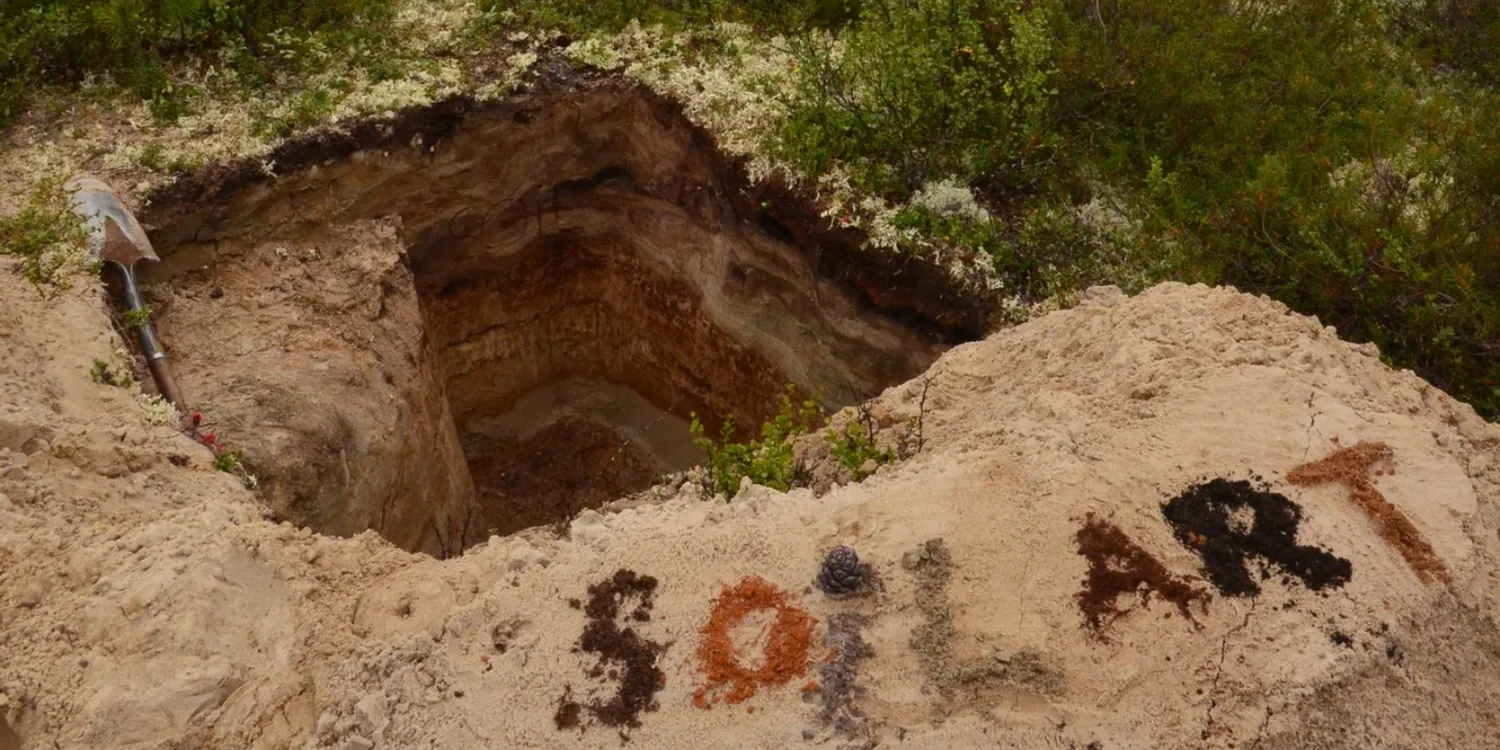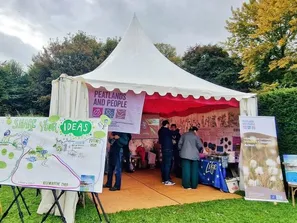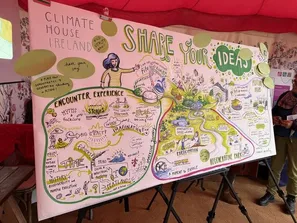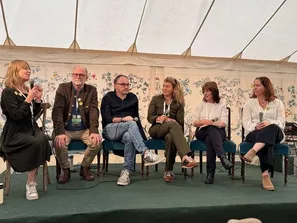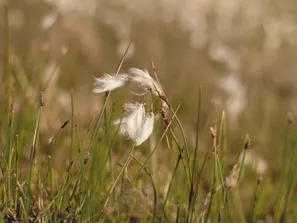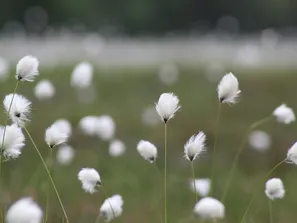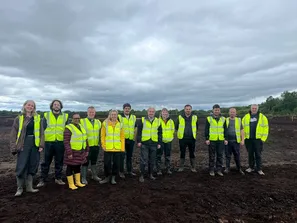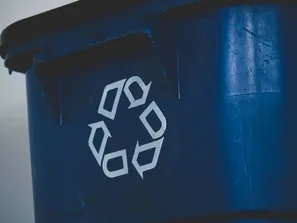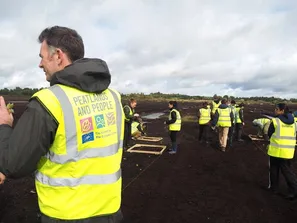18 Sep 2025
People are drawn to the beauty and mysterious nature of remote places such as the Arctic Circle. Northern lights, polar nights, tundra, permafrost, Arctic landscapes, and even polar bears — these words spark interest and often pop up in social media and the news.
For our latest Peatlands and Art feature, our journey takes us across the world to faraway Siberia - a place covered in permafrost. The northern taiga and tundra of the permafrost zone are shaped by deeply aesthetic peatland ecosystems - endless northern “deserts” that come alive during the short but intense vegetation period of the Arctic summer. This is where the SoilART project originates, a project created by a group of soil scientists from Lomonosov Moscow State University, who work across soil science, ecology, and climate change — combining disciplines to understand complex environmental processes. In studying soils in permafrost landscapes - such as frozen hummocky peatland - the team discovered something truly unexpected: a surprising, often breathtaking beauty shaped by permafrost. In many cases, the soil profiles they observed looked like paintings — only the artist was nature itself. This marked the beginning of SoilART.
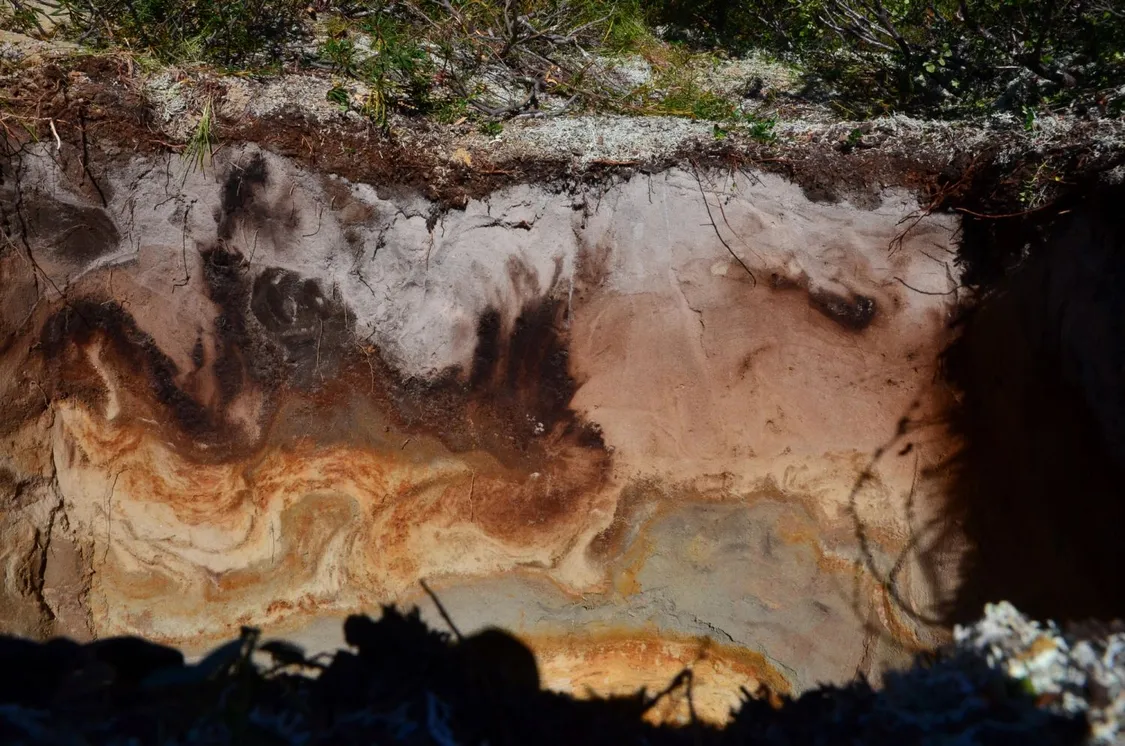
An example of permafrost-affected peat podzol soil
We fell in love with the aesthetics of organic and mineral soils in permafrost landscapes — and decided to explore them more deeply, share their beauty with others, and inspire people to appreciate the soils they usually just walk past. - Matvey Tarkhov, SoilART member
The team started SoilART as a hobby - a side project - but it started to gain more and more traction over the years and is now working with a range of scientists, artists, creatives and volunteers. While the core team is still based at Lomonosov Moscow State University, some members also work at other research institutions and conservation programmes in Russia and across the globe, such as at Wetlands International. They aim to show soil from a completely different angle, revealing the hidden world beneath our feet. The beauty and strangeness of these soil-based artworks capture the attention of both scientists and the public. They inspire curiosity, raise questions, and open conversations about the condition of soils in today’s world. With the motto “discover the world beneath your feet”, the team highlights the aesthetics of the invisible and the fact that soil is not something you can just glance at and appreciate. It takes effort to uncover a soil profile, prepare it for observation, and truly see what’s hidden below.
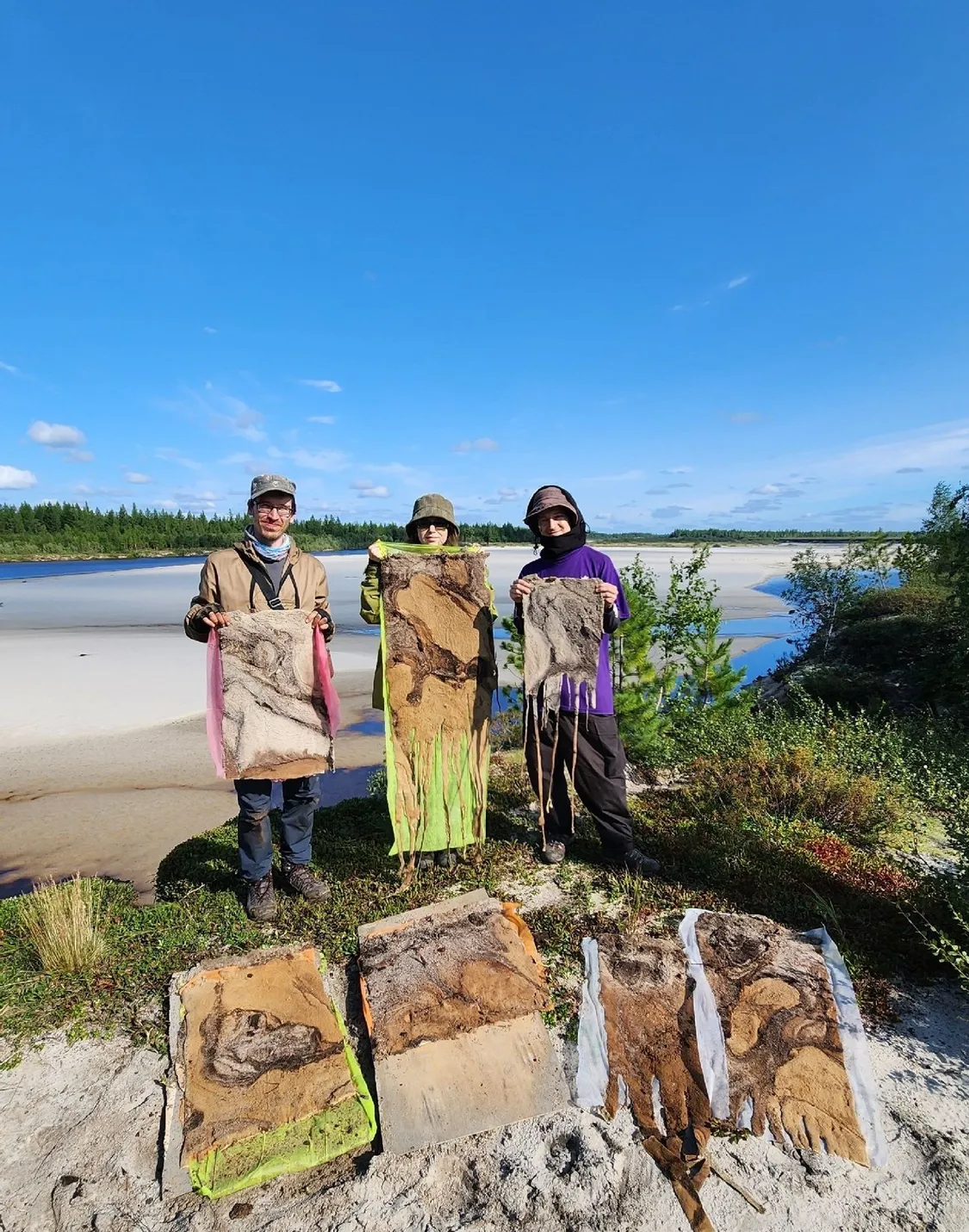
An example of soil monoliths just made in the field
I travelled to the north as a student soil scientist back in the 1990s. My task was to map the soils of a frozen, hummocky peatland. I already understood that the landscape had formed under the influence of permafrost, but still, it was a surprise to suddenly hit a dense ice layer in the soil in the middle of summer. Later, what struck me even more vividly were the consequences of permafrost and cryogenic processes, revealed in the soil profile itself. It was so unusual — and so beautiful - Georgy Matyshak, SoilART team lead
The team collaborates mostly with natural science and local history museums such as V.V. Dokuchaev Central Museum of Soil, K.A. Timiryazev State Biological Museum and Perm Local History Museum , and organises talks and workshops at scientific conferences and public festivals, where they share knowledge about soils and teach people how to make soil pigments, natural watercolours, dorodango, and other creative pieces. As part of their awareness-raising campaign on soils - and to highlight their essential ecological and artistic value - the team is working to reach new audiences. They’ve organised exhibitions in art spaces such as Minima Gallery, and even prepared SoilART-inspired gifts for well-known figures, including the Rector of Lomonosov Moscow State University and the singer-songwriter Leonid Agutin, a household name across the post-Soviet region .
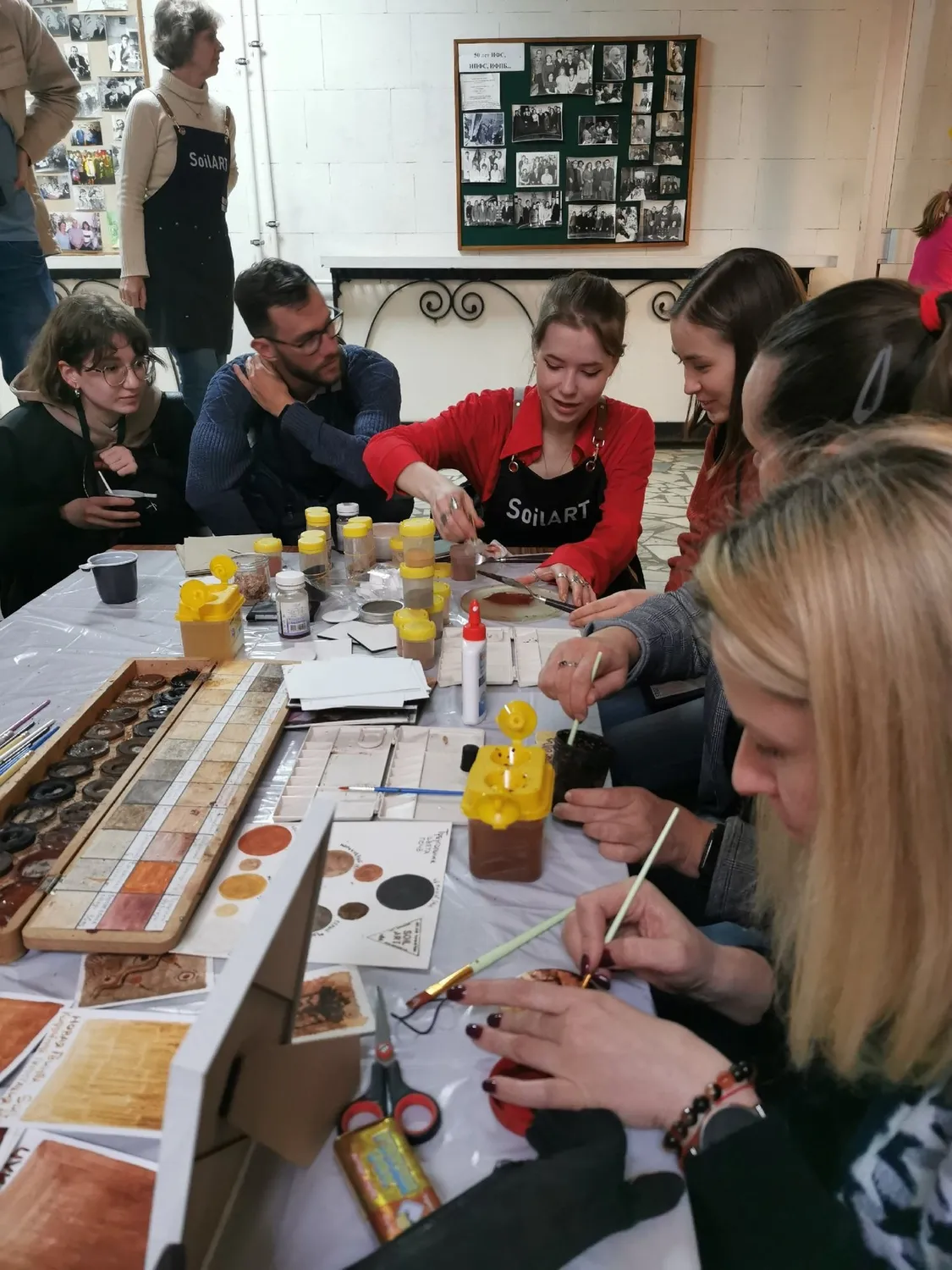
SoilART workshops
Their mission is two-fold:
#1 to showcase the art created by Nature itself. To do that, the team started to take photographs and organised a photo exhibition in the public library in Biology & Soil campus of Lomonosov Moscow State University, dedicated to the northern landscapes and soils. Following an initial overwhelming response, the team started capturing other forms of art from soil, such as soil monoliths — preserved vertical slices of soil which look like “soil prints ” - using a special technique called Soil lacquer peel , which are then showcased at exhibitions where anyone can experience the hidden natural beauty up close. The process of “soil prints” using Soil lacquer peel is both scientific and creative: in a first step, the team digs a soil pit and carefully prepares the exposed profile. The profile is then coated with adhesive, and once it’s dry, a thin soil lacquer peel can be taken off. Back in the lab, the lacquer peel is cleaned and preserved and mounted on a frame.

An example of soil monolith at an exhibition
#2 to show how soil itself can become a medium for creating Art. Here, the team uses a wide range of techniques. They collect interesting soil samples, dry and grind them into fine powders, and turn them into pigments. With a bit of gum arabic, they can be turned into paints. Add wax — and you’ve got a candle. Mix with glue — and you can make unique decorative pieces. In doing so, the team takes inspiration from:
- Colours: The project takes its creative direction from the incredible colours of soils — the magic of natural pigments. Northern soils offer a stunningly rich palette. As the SoilART team grew larger, it was joined by artists Maria Chepurnova and Anastasia Mishchenko who have since created paintings with these natural soil colours. Soil-based paints are incredibly harmonious — subtle, soft, without harsh transitions or synthetic tones. The artworks made with them have a calm and earthy beauty — something truly unique.
- The magic of form: Soils develop intricate structures through fascinating natural processes — and these structures, too, are visually captivating. Capturing this unique characteristic, the team creates unusual objects, like the Japanese-inspired art of shaping raw soil into smooth, polished spheres known as dorodango, turning lumps of soil into smooth, shiny balls — the result is both beautiful and attention-grabbing.

Soil-based paints and art objects
Peatlands, to us, are both magic and challenge – Olga Concharova , SoilART co-lead. On one hand, they’re about the saving grace of a breeze that blows the insects away, the intoxicating scent of Rhododendron tomentosum/Ledum palustre, the taste of fresh northern berries, and the bold, contrasting colours of mosses and shrubs. On the other hand, they mean dead calm, no wind at all, swarms of biting insects, spending days wrapped in a tick-proof suit, and always carrying rubber boots just in case you sink into a hidden pocket of water. If we had to choose a few unforgettable memories, they’d include field lunches on raised peat mounds (pingos), with breathtaking views all around and, of course, jumping into peat pools to cool off during rare heatwaves.
Follow the group on Instagram for more entertaining and aesthetic content on soils and peatlands: https://www.instagram.com/soilart_msu/
